Augmented Coding & Design
The Genie Eats The Seed Corn
Farmers in olden times had a saying, “Don’t eat the seed corn.” Better to go hungry in the spring, plant the corn, & eat later. My coding genie, unfortunately, doesn’t know this saying.
Features & Options
In Empirical Software Design we separate progress into two dimensions:
Features
Options
To implement a feature you write a new test & make it run. Along the way we may degrade the design by increasing coupling or reduce cohesion. To increase the optionality of the software we refine the structure, reducing coupling or increasing cohesion.
Let’s say we’ve followed this process for a while & now we have a system with some features & some options:
Breathing
The empirical style is to add the next feature, then improve the structure.
Then we keep doing that.
This feels like breathing to me. My lungs expand as I take in complexity then relax as I partition that complexity through better design. (There are endless arguments about the time scale, maintain vision, etc. Another day.)
Genie Just Inhales
One of the magical things about augmented coding is how the genie goes past my stated requirements to implement what I would have wanted had I thought to ask for it. “Oh, & here’s a command line tool for this.” “Oh, & I implemented a special purpose testing tool for that.”
One of the not-so-magical things about today’s genies is their lack of taste. That giant function? I just added another 20 lines to it. That direct field access? I just used it 20 more times.
The genie seems to assume that its planetary-sized brain is capable of handling any amount of complexity, so it needn’t ever reduce complexity. It’s right until it isn’t.
It’s a combination of the two factors above that I’m battling right now:
More features introduces more complexity
More complexity slows development of more features
The classic inhibiting loop:
Eventually the friction created exceeds the genie’s capacity:
We are out of options. The genie spins for hours without being able to correctly implement the next feature. We have to either:
Start over (I’ve done this several times but I’m frustrated to abandon promising work)
Manually improve the design (which I enjoy doing but I’m frustrated that my genie got me into a mess it won’t clean up)
Manually improving the design reduces complexity, for me & the genie, & enables developing more features. (Eventually entropy catches up, but that’s inevitable.)
Need To Know
I’m experimenting with another approach—only telling the genie what it needs to know for the next step. I don’t give it overall context—we aren’t implementing a database, we are storing keys & values serialized onto fixed size pages of bytes.
The genie doesn’t seem to run ahead with unsustainable feature development by restricting its context. Because the complexity doesn’t have time to compound, the genie remains capable of helping me refactor (although I wish it knew about automated refactorings).
That’s as far as I’ve gotten. We are all figuring out the shape & limits of these new tools. But we know we can’t eat our seed corn.

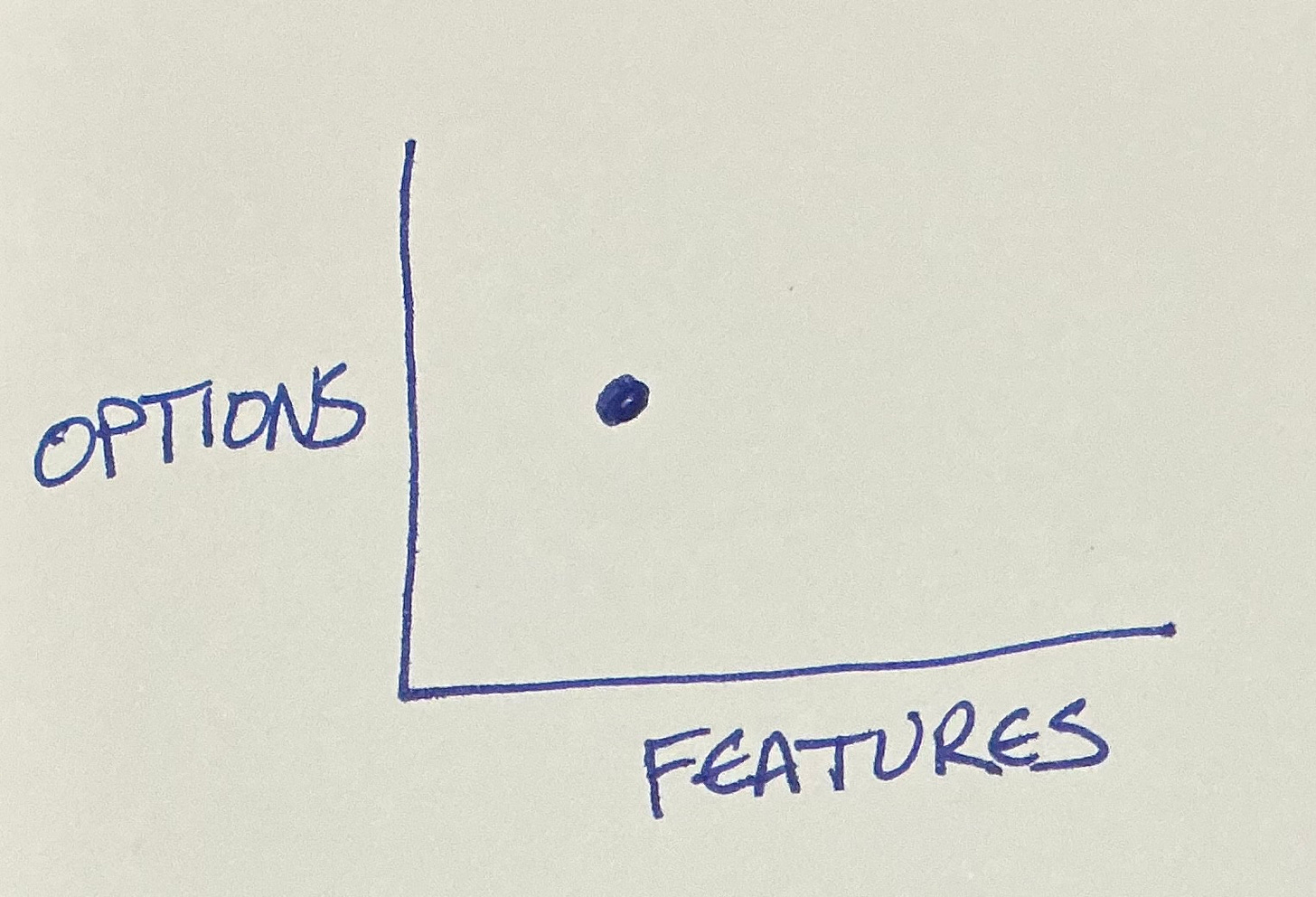
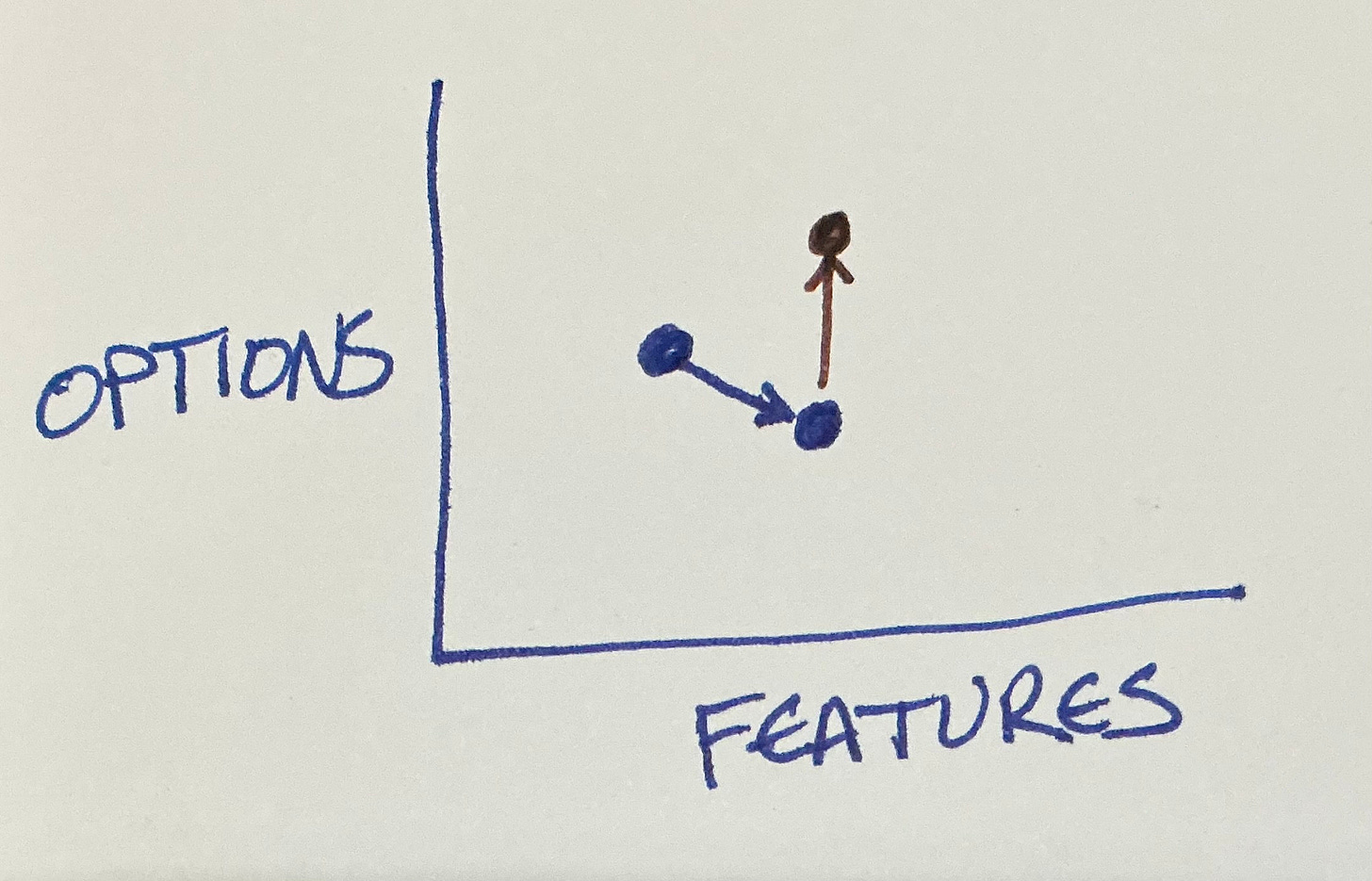
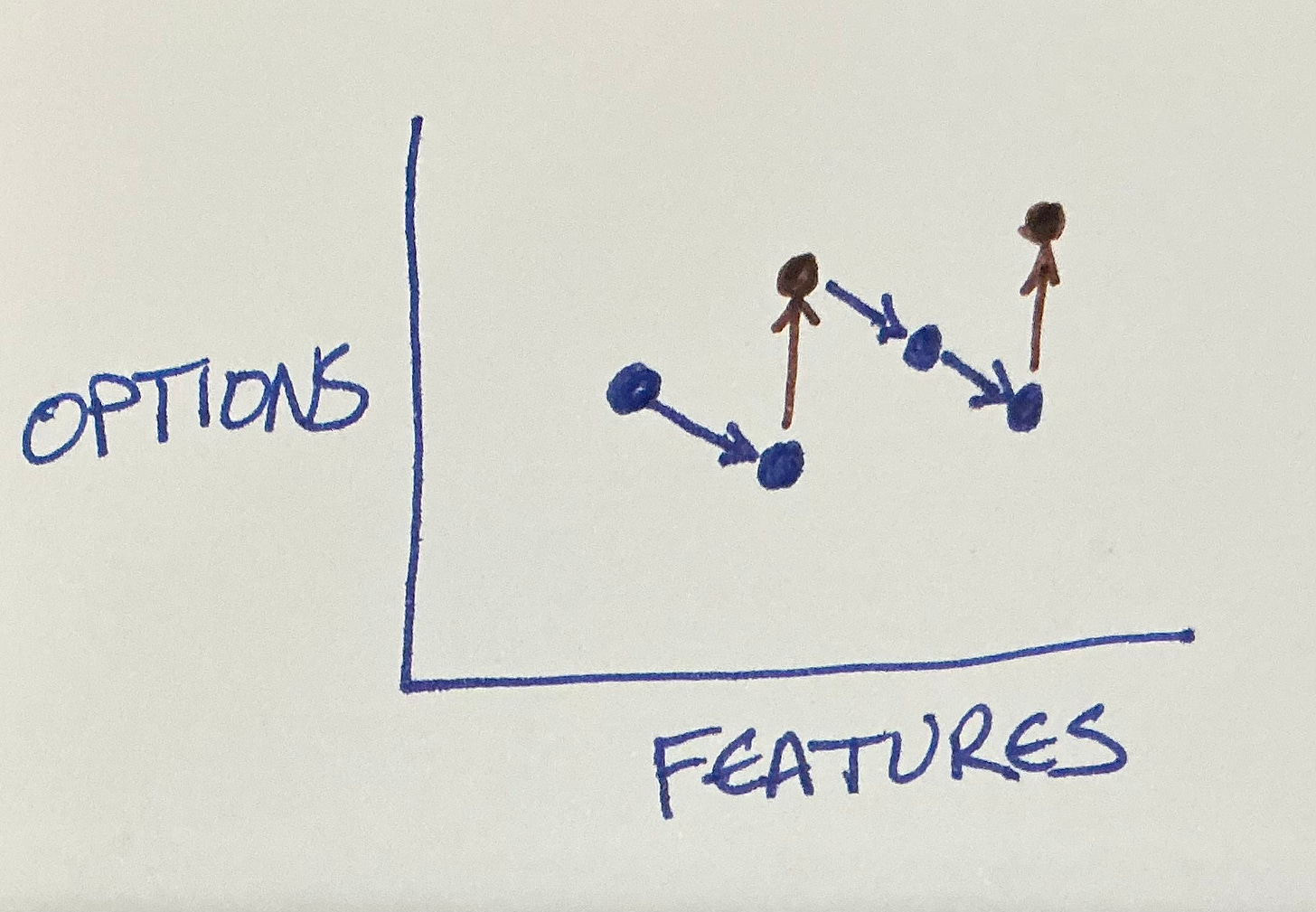


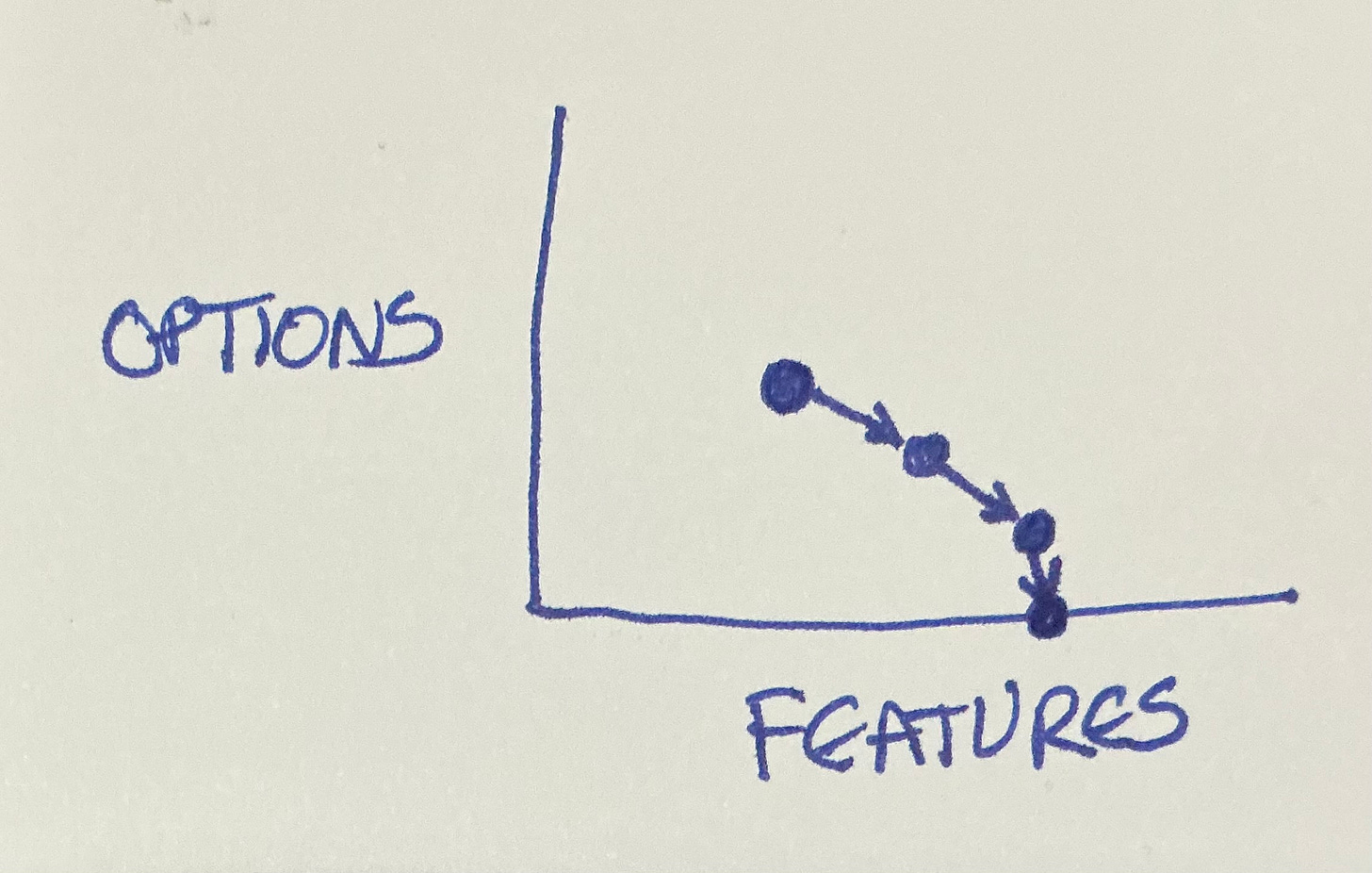
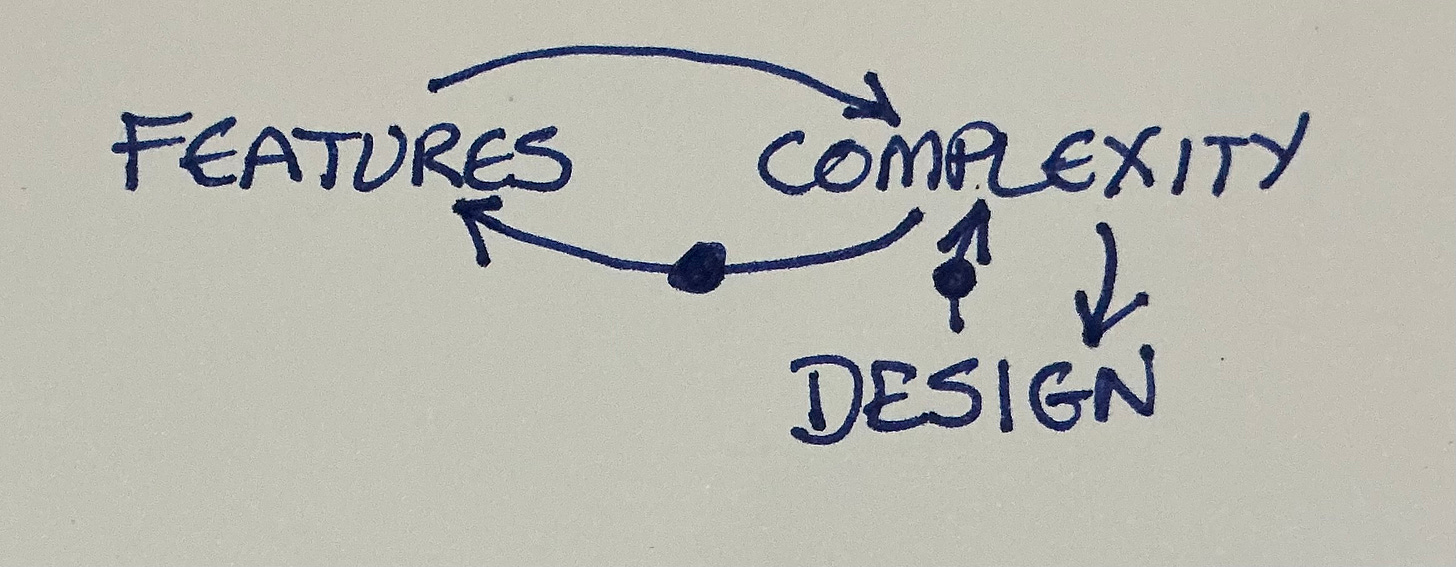
Do you give your genie space for refactoring? 🤔
When I started using the genie in my workplace, I also realized I was too enthusiastic about letting it add features. Even if I required it to follow best practices and add unit tests, I got diminishing returns over time. Now I’m approaching it as you described, asking for small, well-defined changes. I think of myself as writing narrowly-defined user stories and then doing a combination of refactoring and acceptance testing. This process is slower, but I can achieve much more than I ever could un-augmented. I’m still very excited about the future of augmented intelligence